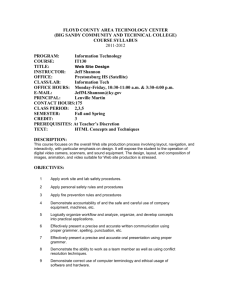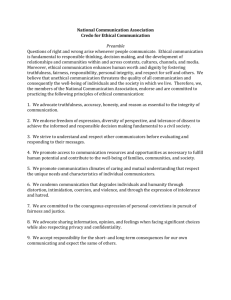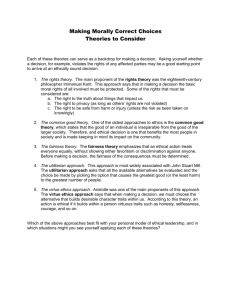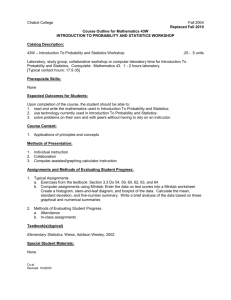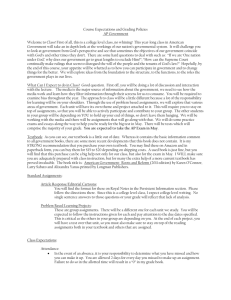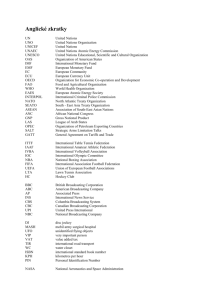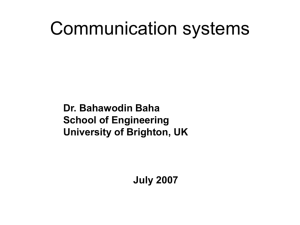DEPARTMENT OF MASS COMMUNICATION COURSE NO. MC 340
advertisement
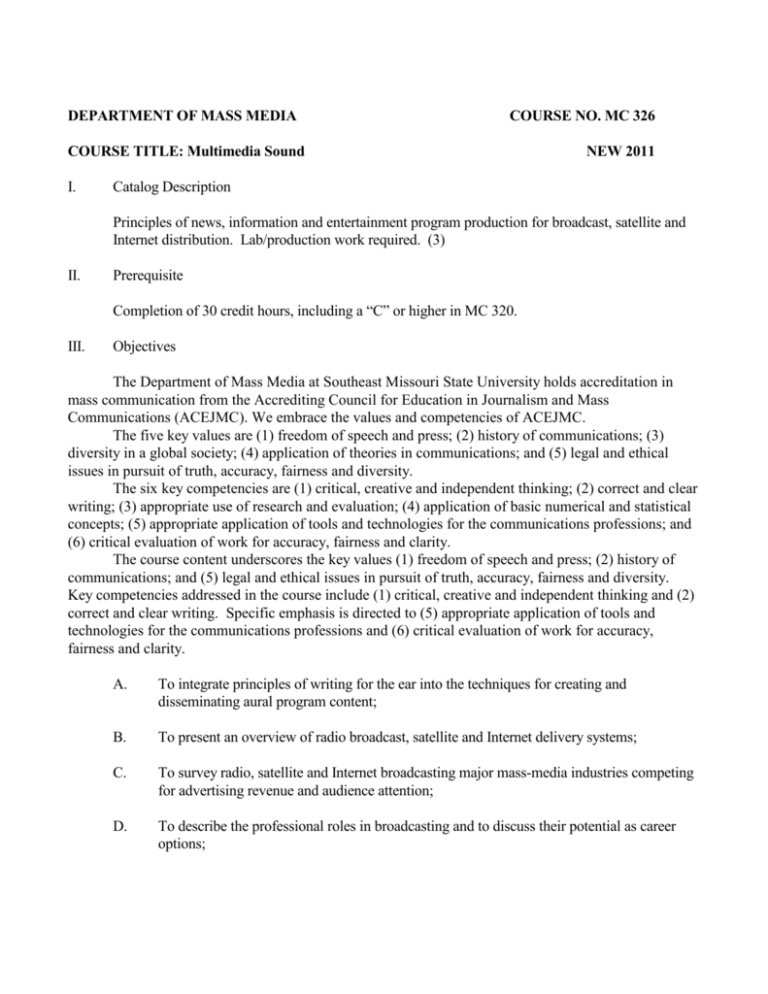
DEPARTMENT OF MASS MEDIA COURSE NO. MC 326 COURSE TITLE: Multimedia Sound I. NEW 2011 Catalog Description Principles of news, information and entertainment program production for broadcast, satellite and Internet distribution. Lab/production work required. (3) II. Prerequisite Completion of 30 credit hours, including a “C” or higher in MC 320. III. Objectives The Department of Mass Media at Southeast Missouri State University holds accreditation in mass communication from the Accrediting Council for Education in Journalism and Mass Communications (ACEJMC). We embrace the values and competencies of ACEJMC. The five key values are (1) freedom of speech and press; (2) history of communications; (3) diversity in a global society; (4) application of theories in communications; and (5) legal and ethical issues in pursuit of truth, accuracy, fairness and diversity. The six key competencies are (1) critical, creative and independent thinking; (2) correct and clear writing; (3) appropriate use of research and evaluation; (4) application of basic numerical and statistical concepts; (5) appropriate application of tools and technologies for the communications professions; and (6) critical evaluation of work for accuracy, fairness and clarity. The course content underscores the key values (1) freedom of speech and press; (2) history of communications; and (5) legal and ethical issues in pursuit of truth, accuracy, fairness and diversity. Key competencies addressed in the course include (1) critical, creative and independent thinking and (2) correct and clear writing. Specific emphasis is directed to (5) appropriate application of tools and technologies for the communications professions and (6) critical evaluation of work for accuracy, fairness and clarity. A. To integrate principles of writing for the ear into the techniques for creating and disseminating aural program content; B. To present an overview of radio broadcast, satellite and Internet delivery systems; C. To survey radio, satellite and Internet broadcasting major mass-media industries competing for advertising revenue and audience attention; D. To describe the professional roles in broadcasting and to discuss their potential as career options; IV. V. E. To delineate the ethical responsibilities of content providers in serving the needs of diverse audience constituencies; F. To cultivate aural performance and content-production skills. Expectation of Students A. To attend all class sessions B. To study text assignments and auxiliary hand-out materials C. To participate in classroom discussions D. To conduct out-of-class listening assignments E. To perform assignments at KDMC, the radio station/website laboratory, on an individual basis Course Content A. Introduction to the course 1. 2. B. C. E. 2 weeks Production studio equipment Multitrack audio production software Writing for the Ear 1. 2. 2 weeks Broadcast control room equipment Program-execution software Recorded content-production techniques 1. 2. 1 week Electronic spectrum allocations Marketplace forces and adaptation to change Live content-production techniques 1. 2. D. Acquaintance with the textbook and facilities The vocabularies of radio broadcasting and Internet audio Analog and digital distribution systems 1. 2. 1 week News Advertising and public service messages 3 weeks 3. F. Methods of Content Distribution 1. 2. 3. G. 1. 2. 3. J. K. 1 week Business practices Advertising-rate establishment and sale of advertising time 1 week Ratings concepts Methodologies of measurement Arbitron ratings reports The industries in perspective 1. 2. 3. 1 week News and public-affairs coverage Viewpoint diversity Entertainment programming Audience measurement 1. 2. 3. 1 week The Federal Communications Commission Other governmental regulators Intellectual property rights The local station and the community Economic concerns 1. 2. VI. Broadcasting Webstreaming Podcasting Ethical principles I. 1 week Industry regulation 1. 2. 3. 4. H. Internal Promotion 1 week Update on career outlooks Station and non-station career possibilities Conceptual summary and review Textbook and Other Required Materials A. Textbook: Donald Connelly, Digital Radio Production. Waveland Press, 2005. B. Auxiliary Materials and Equipment: 1. 2. 3. VIII. KDMC Operator Handbook (instructor website) Blank CD-R media Removable storage media Basis for Student Evaluation: Class Participation (discussion & activities) (10 points x 10 = 100 points) 10% Writing/production assignments (50 points x 4 = 200 points) 20% Midterm Examination (200 points) 20% Midterm Performance Evaluation (100 points) Final Examination (200 points) 10% 20% Final Performance Evaluation (200 points) 20% Total Points Available = 1,000 Grading Scale A = 90% - 100% of available points B = 80% - 89% " C = 70% - 79% " D = 60% - 69% " F = 0% - 59% "

